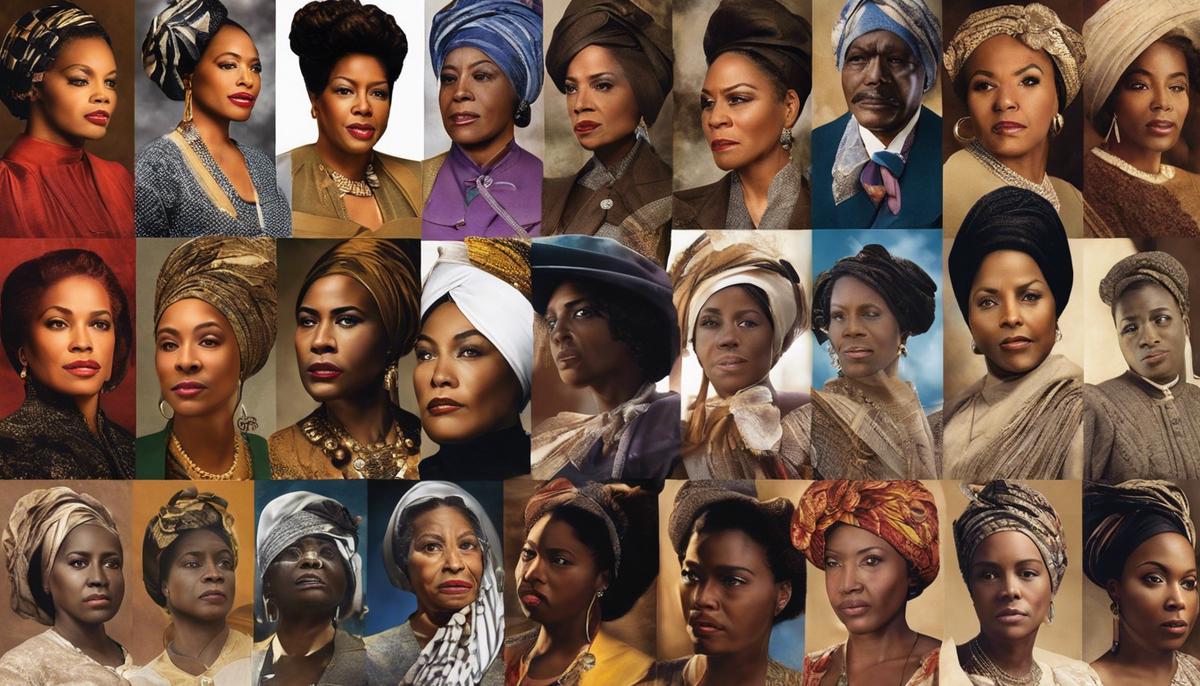The dual marginalization that free African American women faced, navigating through the complexities of gender and racial prejudice, underscores a poignant narrative of struggle, resistance, and empowerment.
Born into a socio-political landscape riddled with antagonistic entities, these women found themselves on the frontline of the grueling fight for their rights.
Wrestling against a double-bind societal system while managing their identities, free African American women have continuously pushed against traditional narratives, forged paths of resistance, and compelled change.
Examining their fight through historical narratives, the principle of intersectionality, and representations in media and literature, provides a far-reaching understanding of their experiences.
Their stories are essential to understanding the intersection of race and gender, revealing both historical and modern struggles and triumphs.
To further explore the rich tapestry of Black history, consider reading “Pioneering Black Inventors of the 1800s.” For more in-depth historical content, subscribe to my YouTube channel.
Historical Perspectives on Free African American Women
Interpreting Dual Marginalization: Historical Perspectives on Free African American Women
In any exploration of marginalized groups, refractory visions of time and culture are essential. The historical perspective shapes and reshapes our perceptions, allowing us to understand better the various lived experiences.
This essay aims to discuss how historical perspectives may affect our comprehension of the dual marginalization that free African American women experience.
In an era known for its rigid racial divides and gender discrimination, free African American women grappled with dual marginalization.
This dual marginalization, which is defined by the intersection of race and gender, entails experiencing systemic oppression on both fronts. While racism targets their African American identity, sexism undermines their status as women.
Historical perspectives essentially provide us with a lens to understand these socio-cultural contexts to interpret individuals’ experiences within these contexts better.
As Historiography evolves, so too does the understanding of how historical events and trends influence current situations.
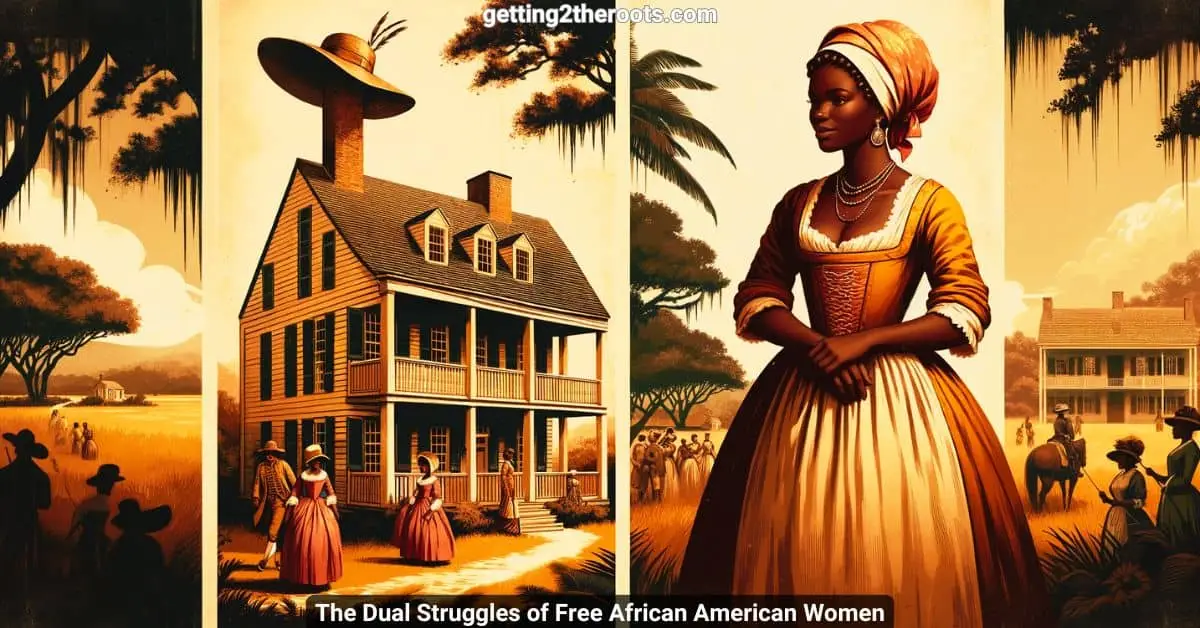
Historiographical perspectives, particularly the more contemporary feminist and intersectional schools, can significantly alter our interpretations.
The intersectionality theory —popularized by scholar and civil rights advocate Kimberlé Crenshaw— posits that multiple social categorizations, like race and gender, result in unique forms of disadvantage and discrimination.
Taking the case of free African American women in the 19th Century, an uncritical interpretation might celebrate their ‘free’ status without delving deeper into the nuanced experiences of systemic oppression they faced daily.
A historian versed in feminist intersectionality, however, would take into account the larger social structures of patriarchy and white supremacy that these women navigated simultaneously.
Besides, historical narratives that included the experiences of African American women were often sidelined in more traditional historical discourses.
However, as the field of history has evolved, the narratives of free African American women have been recognized as valuable accounts that provide insights into the nuanced experience of dual marginalization.
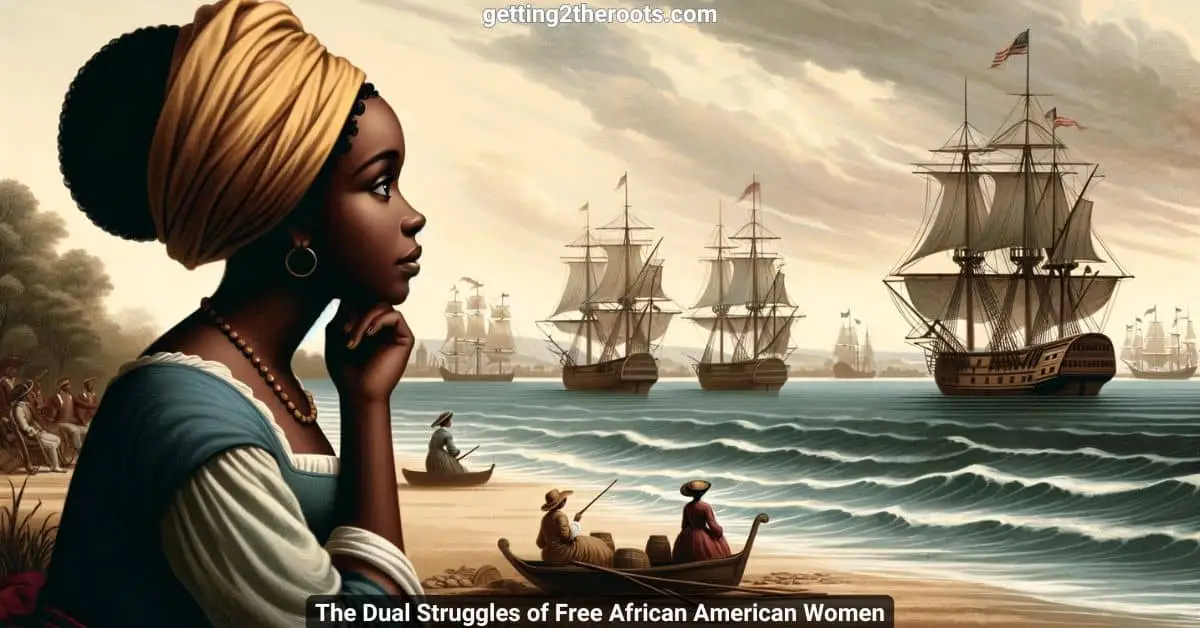
In analyzing primary sources such as letters, speeches, and diaries of free African American women, it is possible to draw out the reality of the dual marginalization that they faced.
Historiography advances, enabling the exploration of the intricate dynamics of racism, sexism, and other forms of discrimination.
As a result, historical perspectives unquestionably have the potential to significantly affect our comprehension of the dual marginalization that free African American women experience.
Not only do they add depth to our understanding of the complexities of these women’s lives, but they also pose crucial questions about the nature of power, privilege, and the intersectionality of discrimination.
As researchers and academics, our responsibility lies in acknowledging these complexities and realizing the transformative potential of adopting an informed, historical perspective in interpreting social phenomena.
Our research should reflect the deeply interconnected nature of oppression and privilege and strive to shed light on the multifaceted yet often overlooked experiences of marginalization.
Thus, historical perspectives not only influence but also enhance our understanding of dual marginalization, enabling a richer, more inclusive understanding of the lived experiences of free African American women.
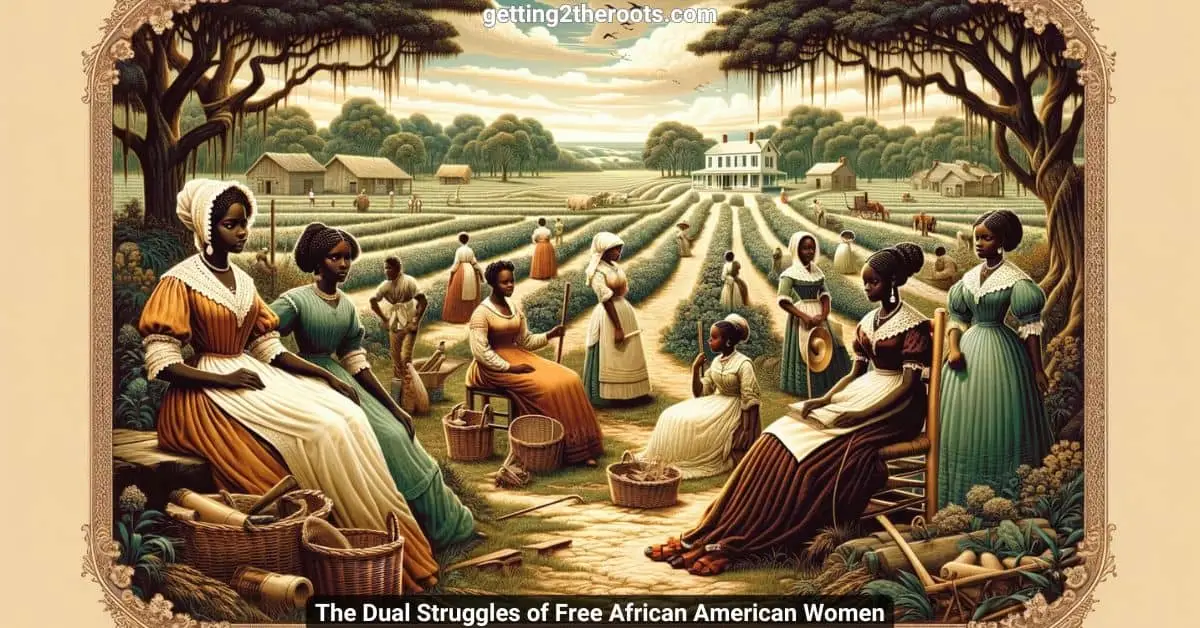
Intersectionality in Discrimination
Exploring the Phenomenon of Intersectionality in the Narratives of Free African American Women
Intersectionality, as a theory and analytical tool, lays bare the multi-layered facets of social inequities. Free African American women’s lives reflect complex intersections of race, gender, and class. Their stories offer unique insights into inequality.
It calls attention to how these converging identity markers culminated not just in compounded marginalization, but also in a profound resilience and spirit of resistance that paced the trajectory of social and political change.
Scholars often allude to the ‘Matrix of Domination’, a concept put forward by sociologist Patricia Hill Collins, while discussing the intersectional experiences of free African American women.
This matrix, comprised of interconnected systems of oppression such as racism, sexism, and classism, constructed a unique paradigm of subjugation for these women.
Dissecting this ‘Matrix’ provides valuable insights into the systemic structures and socio-cultural dynamics that perpetuated their marginalization.
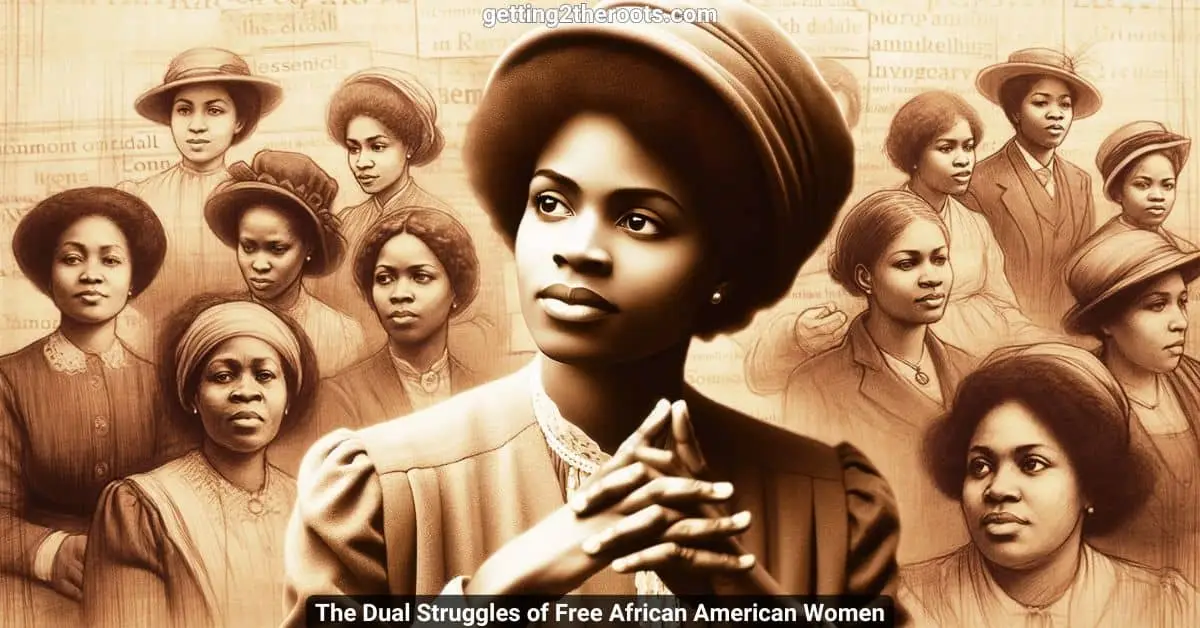
Being free yet African American, and being a woman on top of that, posed an intricate puzzle of survival for African American women. Their ‘freedom’ came with a convoluted mix of opportunities and threats.
However, it is crucial to remember that this was not a homogenous group; intersectional experiences varied greatly depending on socio-economic status, geographic location, and cultural background, among various factors.
For instance, the narratives of free African American women residing in northern U.S. cities, tasked with carving identities within white-dominated spaces, differed vastly from those living in the South, grappling with the cherished vestiges of slavery.
On the one hand, they were battling white supremacy, and on the other, they were resisting the patriarchal structures within their own communities. However, amid the complexities of their lived experiences, they showed remarkable agency.
They cultivated and relied on social networks, religious congregations, mutual aid societies, and activist movements to battle the multiple forms of oppression they weathered.
These supportive networks served as bastions of solidarity and safety for many women and served as an essential buffer against relentless marginalization.
An examination of oral histories, autobiographies, and documented accounts reveals a profound resilience embedded in the fabric of their lives.
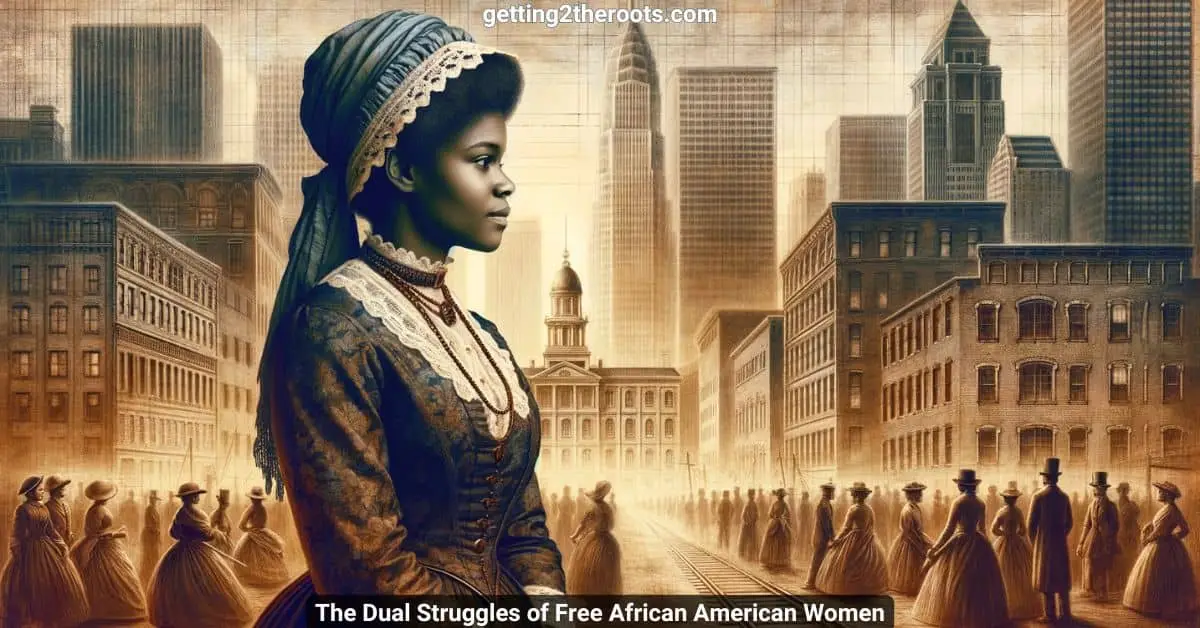
Not only were these women enduring interlaced layers of oppression, but they were also actively involved in combating them.
Their resistance essentialized their narratives and underscored the crucial role they played in the fight for justice and equality.
The examination of free African American women through the lens of intersectionality paints a complex picture of struggle and survival.
It is a testament to their resilience and the essential role they played in shaping America’s social, cultural, and political landscape.
Therefore, embracing intersectionality as an imperative analytic framework is paramount not just for preserving these stories and honoring these experiences, but, more importantly, for guiding contemporary discourse on race, class, and gender.
By doing so, we allow these powerful narratives to inform our understanding of present-day inequalities and inspire strategies to overcome them.
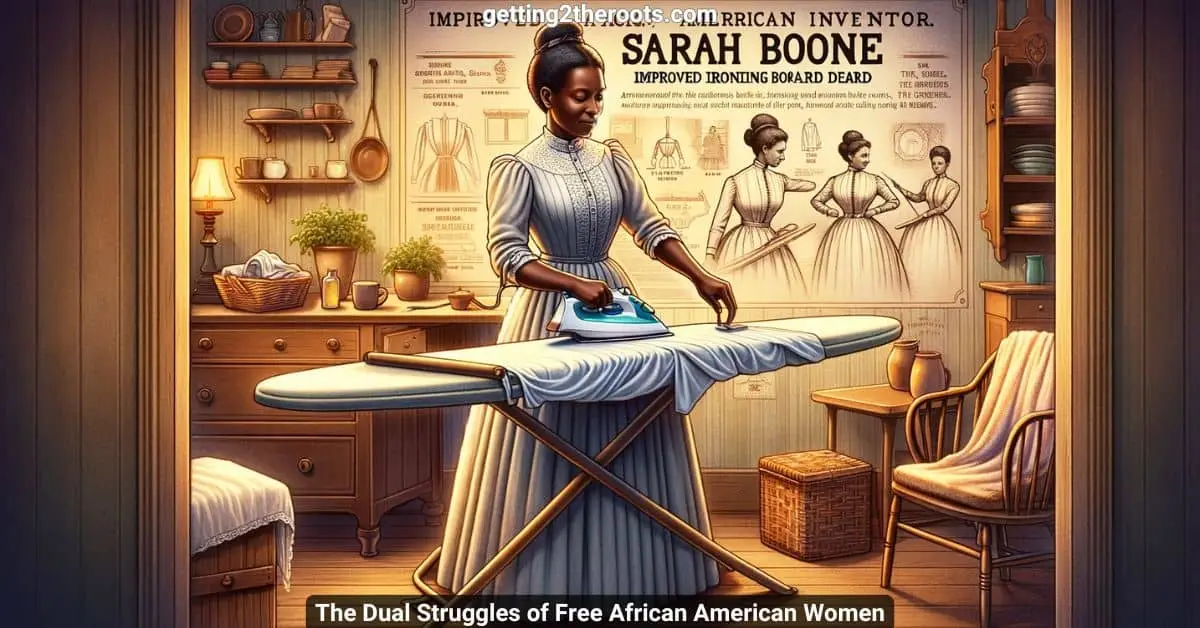
Representation of Free African American Women in Media and Literature
Representation of Free African American Women in Media and Literature: A Catalyst for Societal Perceptions
Examining the progression of media and literature throughout history reveals glimpses into societal perspectives and cultural norms at various points in time.
In particular, the portrayal of free African American women appears to be an area rich with nuances, tensions, and complexities that contribute significantly to societal attitudes towards these individuals.
Rendering of these women’s stories in literature and media has been pivotal in challenging dominant narratives steeped in prejudice and ignorance.
Scripts and narratives that navigate the complex terrain of race, gender, and class, have been instrumental in subtly altering paradigms and initiating discourse on the lived realities of African American women.
Structured or stereotypical representation has frequently missed the nuances of these women’s experiences.

However, where exemplary works have emerged, they have allowed certain aspects of their experiences to be unfolded to the world.
Literary works like Zora Neale Hurston’s ‘Their Eyes Were Watching God’, or Harriet Beecher Stowe’s ‘Uncle Tom’s Cabin’, transcend simple narratives, subverting monolithic stereotypes to foreground the layers of existence as a free African American woman.
The complexities of shaping one’s identity amidst adversity have found poignant articulation in these stories.
Media portrayals, likewise, have oscillated between reductive stereotypes and groundbreaking personifications.
The shift from one-dimensional roles to multifaceted, influential characters gradually highlights the lived realities and aspirations of free African American women.
Groundbreaking performances like Dorothy Dandrige’s role in Carmen Jones (1954) or Cicely Tyson’s in Sounder (1972) provide nuanced portrayals that extend beyond racial stereotypes.
More recently, productions such as Scandal (2012–2018), How to Get Away with Murder (2014–2020), and Insecure (2016-present), showcase empowered characters, adding complexity and depth to portrayals of African American women.
These representational shifts in literature and media have reciprocal effects on society. They help dismantle preexisting biases, foster greater understanding and empathy amongst different racial and gender groups, and incite introspection and change within societal structures.
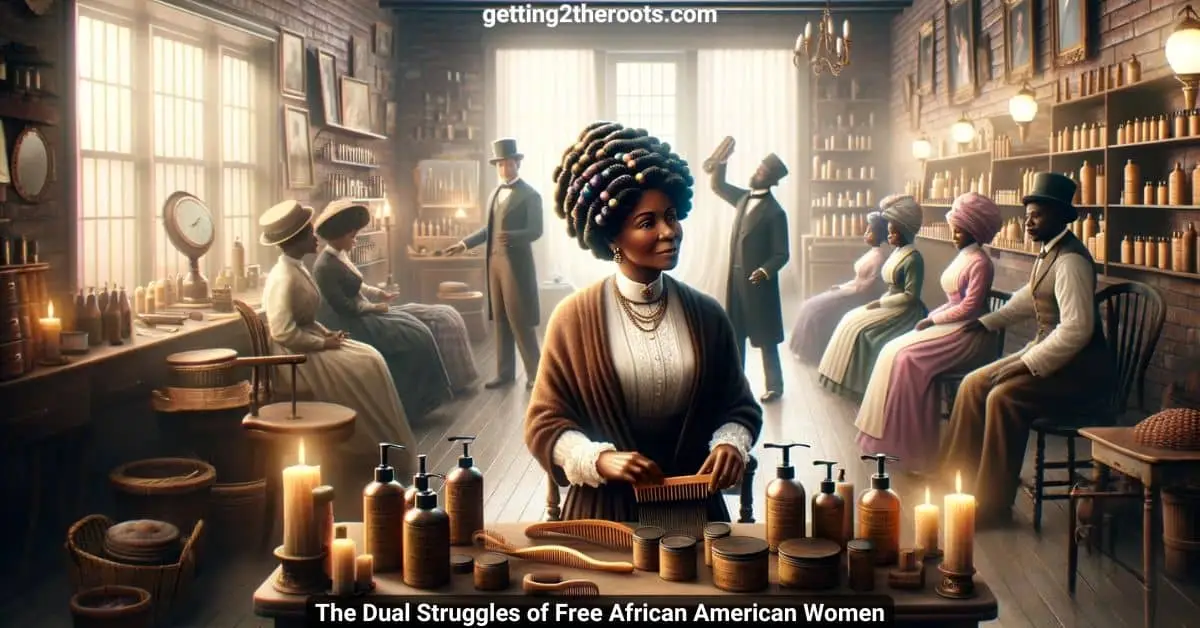
This dialectical relationship between representation and societal attitudes significantly influences societal perceptions of free African American women.
Religious, academic, and activist discourses in media and literature also play a significant role in reframing societal perceptions.
Real-life figures and fictional characters have often projected a blend of suffering and resilience, oppression and resistance, thereby humanizing the narrative around African American women and their personal and collective pursuits.
These narratives bring to light the fortitude, intelligence, warmth, and indomitable spirit that have been the cornerstone of their existence.
While historical and contemporary representations are gradually evolving, the journey toward comprehensive and genuine representation remains an ongoing endeavor.
Each portrayal that contests uniformity and oversimplification contributes to painting a fuller picture of African American women and their intersectional experiences.
This allows for a more nuanced understanding and appreciation of the diverse pathways with which they navigate their realities amidst the complexities brought about by race, gender, and class.
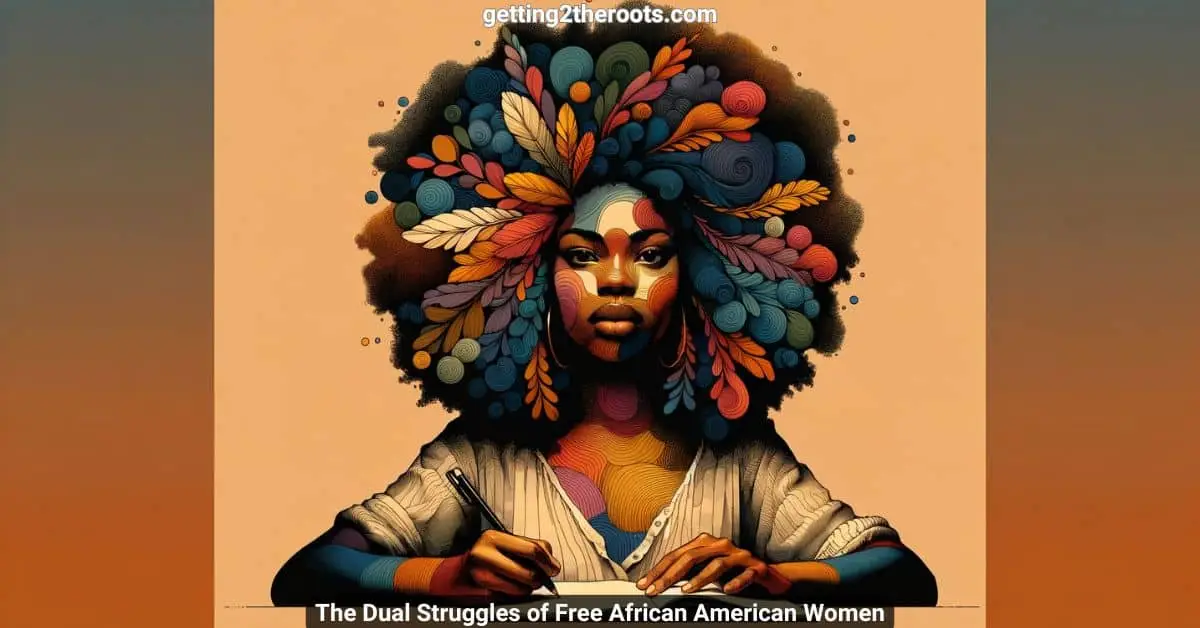
Resistance and Empowerment: The Lives of Free African American Women
The capacity and resilience of free African American women to resist marginalization and demonstrate empowerment is a testament to the power of human determination and agency.
The archival relics bear testimony that free African American women have long been exhibiting various forms of resistance, contesting exclusion, and asserting their presence.
Apparent in their struggles is a rare level of tenacity and fierceness that often transcends the scholar’s and academics’ expectations and interpretations.
Harnessing societal structures and institutions has been a significant mode of resistance for these women.
Their infiltration and utilization of the institution of marriage, traditionally seen as a patriarchal domain, is one such example.
By asserting autonomy and adopting non-traditional roles within matrimony, they challenged both the gender and racial order.
Agency within household management, control over their bodies, and the ability to own and bequeath property were pivotal ways they contested societal norms.
They effectively carved out spaces of relative autonomy within a constraining and patriarchal institution, thereby subtly disrupting the entire social order.
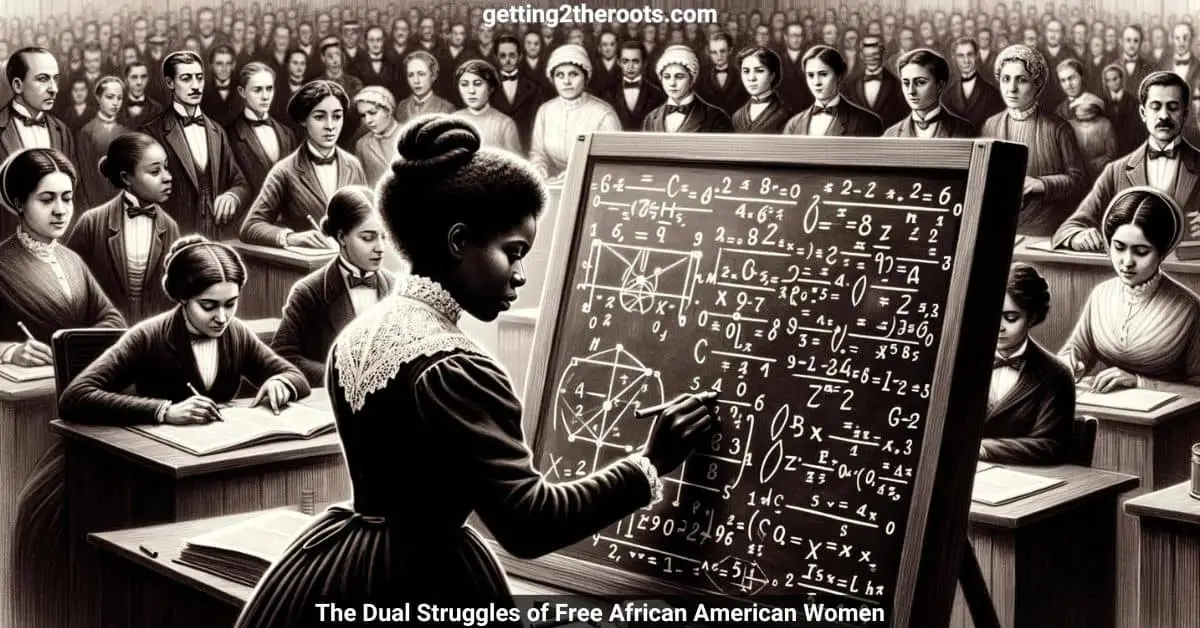
Education, for many free African American women, has been a powerful weapon for countering marginalization.
They perceived the empowerment that comes with education and sought knowledge not only for personal growth but also to challenge the gendered and racialized societal hierarchy.
By establishing schools, developing alternative curricula, and insisting on education for their children, free African American women turned to knowledge to contest their subjugation.
Furthermore, free African American women demonstrated innovative involvement in the economic realm to resist marginalization.
Despite structural barriers and limited opportunities, they engaged in various income-generating activities, from wage labor and trade to entrepreneurship.
Their economic independence contributed not only to household sustainability but also reinforced their agency in the public sphere, subtly shifting societal perceptions.
In addition, they have been active contributors to political movements, asserting their voices and perspectives.
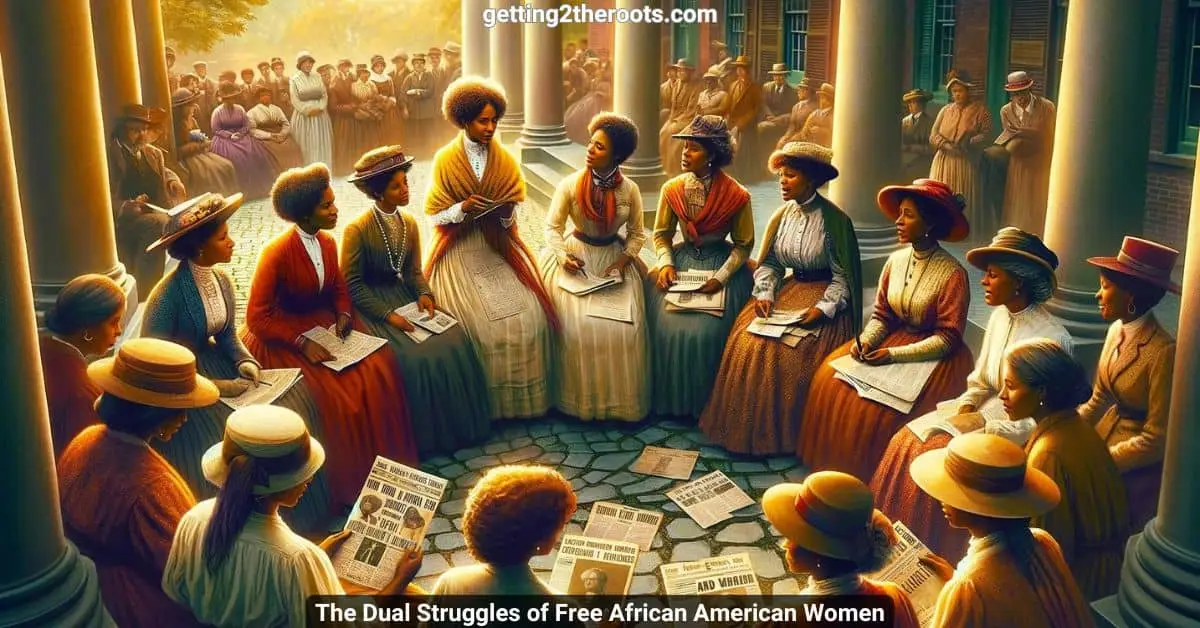
Their involvement in abolitionist movements, women’s rights campaigns, and civil rights causes reveals the power of their political praxis.
They have been instrumental in shaping significant social changes and have consistently integrated their struggles with the broader fight for justice and equality, creating platforms for inclusive transformation.
The musical realm has also been a platform for empowerment for free African American women. From spirituals, gospel, jazz, and blues to rap and R&B, they have ingeniously used music as a tool of resistance and expression.
Precisely controlling tone, lyrics, and performing style to convey their narratives, experiences, and aspirations, their musical interventions have been deeply political, challenging, and redefining societal attitudes.
Whether it is quilting, visual arts, or literature, they have expressed their narratives of marginalization and resilience creatively, voicing their unique realities, experiences, and aspirations.
Their art has not only been a weapon of protest but also a vehicle of communal solidarity, cultural preservation, and constructive dialogue.
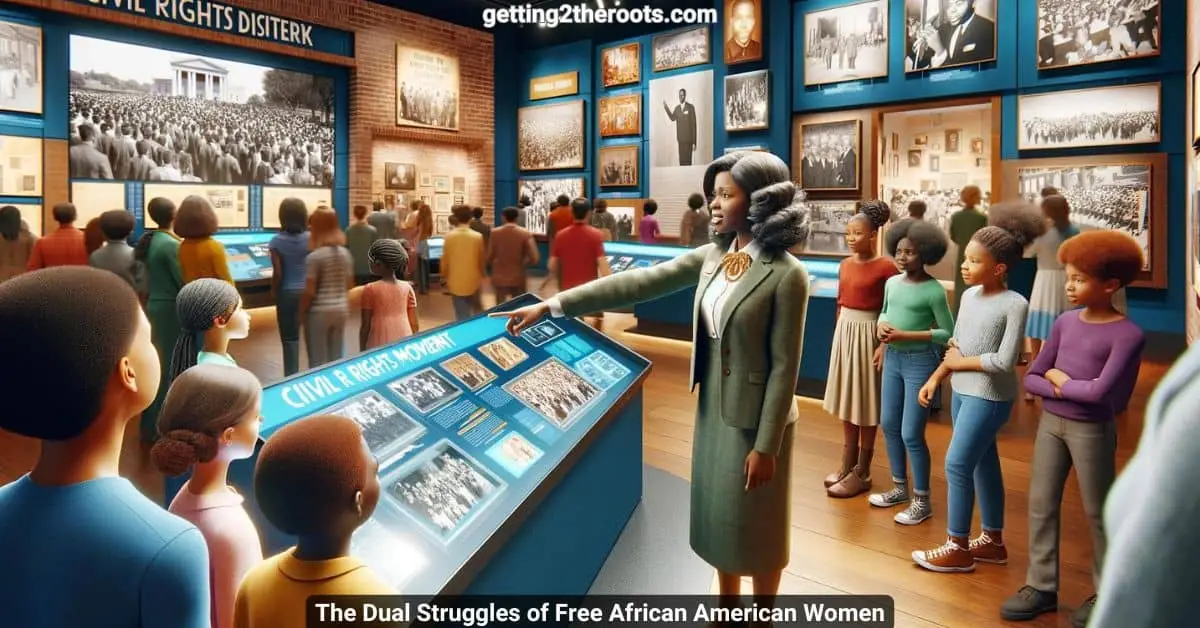
Impacts on Contemporary Society
Now, let us venture deeper into the realm of their influence on modern society, specifically in the context of education and economic paradigms, which were intrinsically linked with the networks of resistance and empowerment of free African American women.
Free African American women used education as a significant weapon to fight oppression because they saw it as a route to freedom and a tool for shaping personal and societal identity.
The establishment of educational institutions for African American youth during the antebellum period, for instance, showcased their deep-rooted resolution to defy societal limitations on their access to knowledge.
The legacy of such initiatives is evident in contemporary society, through revisions in curriculum to integrate African American histories and contributions as a fundamental component of the American narrative.
Further, the willfulness of free African American women illustrated itself in their economic endeavors, with many delving into entrepreneurship as a means to secure autonomy and wield influence.
The economic participation and entrepreneurship of these women, particularly in the segregated environments of the Jim Crow era, directly challenged the norms of white supremacy.
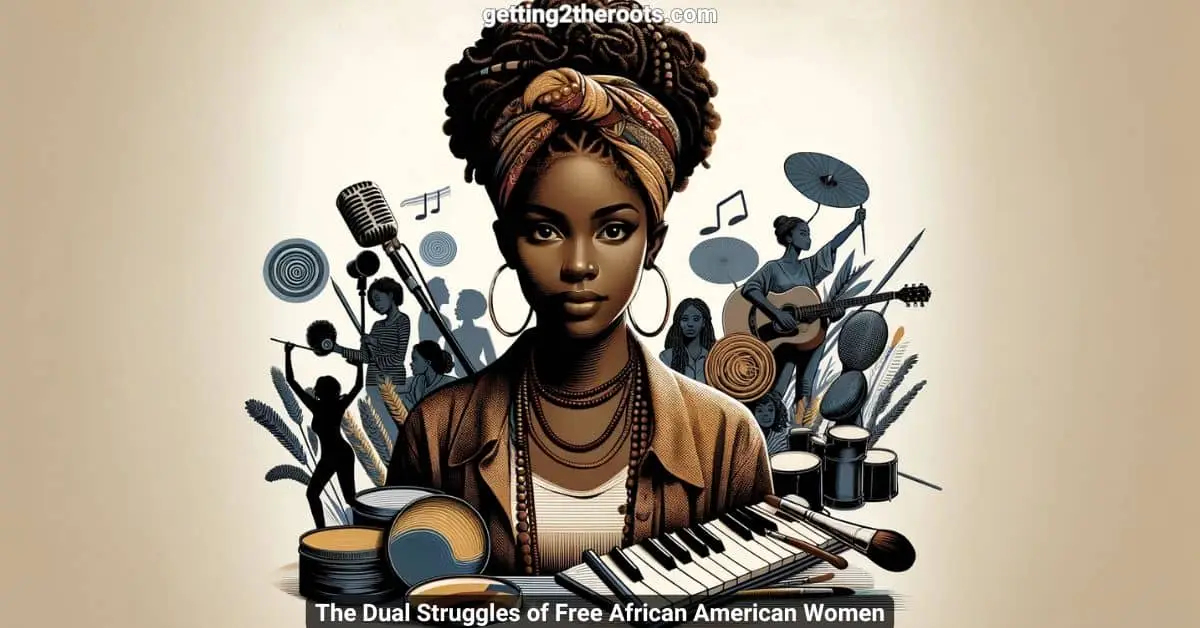
Their stories now serve as a testament to resiliency and tenacity and invigorate the psyche of African American businesswomen in contemporary society who continue the tradition of defying boundaries and breaking glass ceilings.
Moreover, there is a remarkable thread linking the political activism of free African American women to the present-day discourse on racial and social injustice.
Their involvement in abolitionist and suffrage movements, as well as civil rights activism, laid substantial groundwork for contemporary social movements such as Black Lives Matter, which focus on dismantling systemic racism and advancing equality.
Moreover, the arts, particularly music, offered another potent platform for both resistance and expression. This finds echoes in modern iterations, where African American women artists use music as a medium to articulate their lived experiences and instigate social change.
The profound and nuanced messages in the works of contemporary African American female musicians such as Beyoncé, Solange, and Janelle Monáe, underscore the lasting influence of historical resistance through artistry.
Lastly, it is indispensable to highlight the concept of resistance aesthetics prevalent among free African American women.
Through dress, hair, and cultural practices, these women forged a robust, unbroken lineage of resistance, contending against the systemic erasure of their identity.
The appreciation of this aesthetic resistance in present-day culture broadens the scope of Black identity and self-affirmation and enables a reconnection to this historical reservoir of resilience and determination.
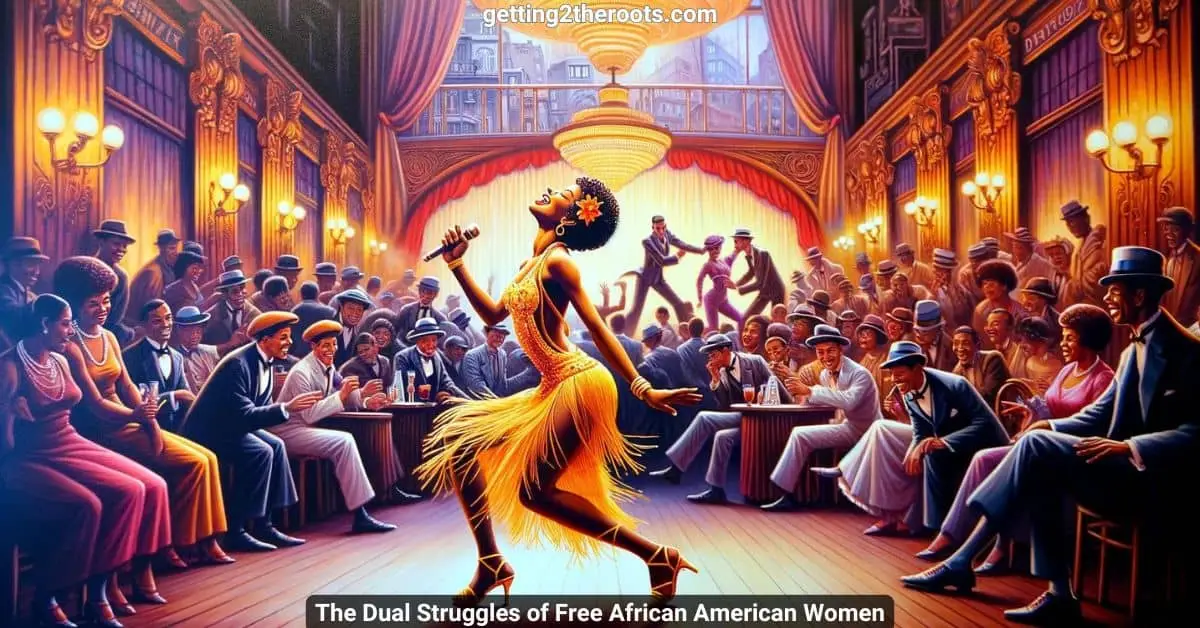
Conclusion
In conclusion, the experiences of free African American women from history continue to reverberate in contemporary society, not simply as symbolic gestures of history but as visceral influences shaping societal and cultural landscapes.
Indeed, their narratives inform and invigorate present discourses on social, economic, and cultural empowerment, paving the way for the dream of a better, more equal society.
As the chronicles of free African American women, characterized by their struggle against racial and gender discrimination, continue to reverberate through the annals of history, one recognizes the indomitable spirit that fueled their ongoing quest for socio-political equality.
Their historical experiences invariably influence the present and play an irreducible role in shaping contemporary discourses about identity and equality.
Whether it’s surviving the paradox of ‘freedom’, challenging stereotypes in media and literature, or fighting for representation, their narratives lend strength to present-day movements working towards a more equitable society, leaving an indelible imprint on modern society.
As we continue to unearth these women’s stories, their courage, sacrifice, and resilience serve as a reminder of our collective responsibility to end systemic discrimination, champion equality, and honor the dignity of all individuals.
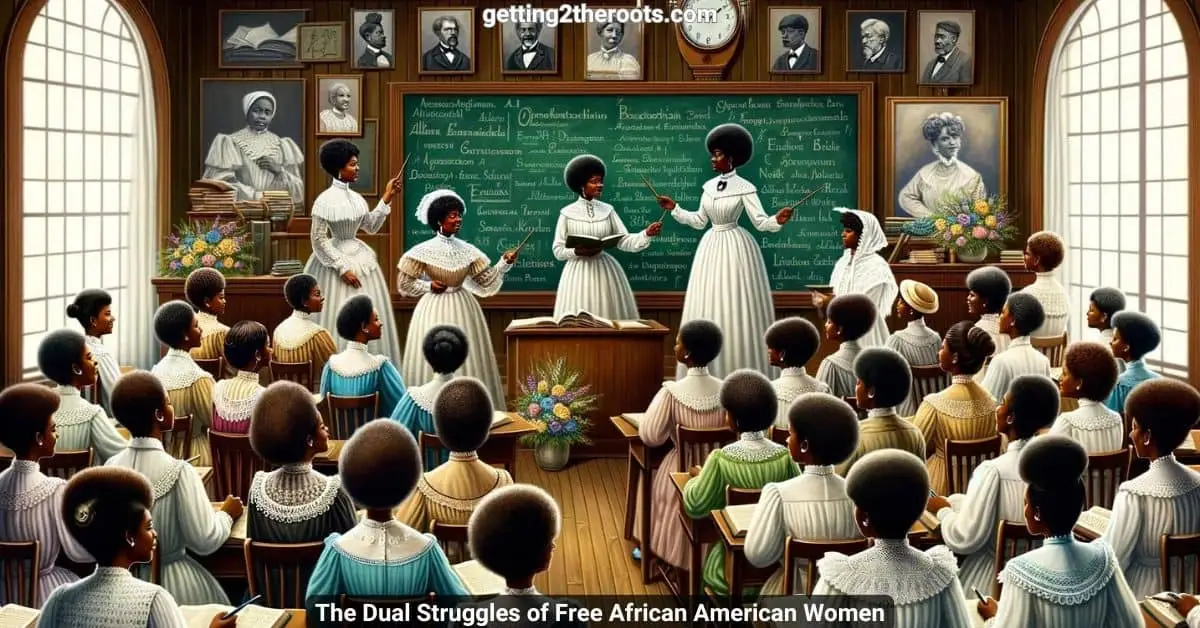
FAQ
- What is dual marginalization? Dual marginalization refers to the compounded discrimination faced by individuals, particularly free African American women, who were marginalized due to both their race and gender.
- What role did free African American women play in resisting societal norms? Free African American women resisted societal norms through education, economic independence, political activism, and creative expression, challenging both racial and gender discrimination.
- How did intersectionality affect the experiences of free African American women? Intersectionality, which considers the overlap of multiple social categories like race and gender, affected free African American women by subjecting them to unique forms of discrimination and empowering them to resist oppression in complex ways.
- How are the struggles of free African American women relevant today? The struggles of free African American women are relevant today as their resilience and activism laid the groundwork for contemporary social justice movements, influencing modern discussions on race, gender, and equality.
- How were free African American women represented in historical media and literature? Historical media and literature often misrepresented free African American women through stereotypes, but some works provided more nuanced portrayals that highlighted their resilience and complexity.

